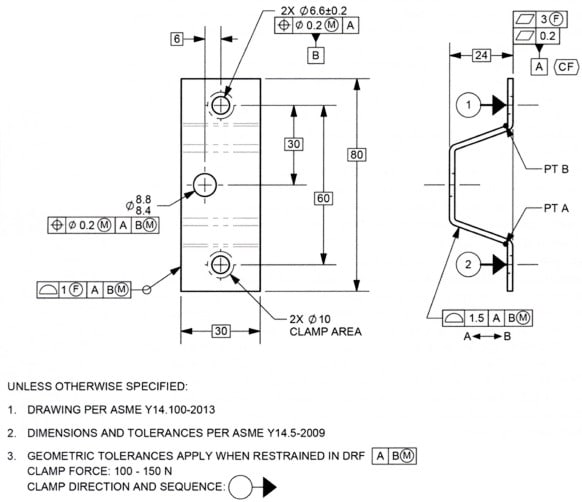SeasonLee
Mechanical
- Sep 15, 2008
- 918
Please ref to the figure below, two questions need help:
1. Is it valid to have a Free-State symbol within the flatness FCF? Since the restraint note on the drawing will override the Free-State default condition, so I will say No, am I right?
2. What's the meaning of the 2nd segment flatness callout?

Thank you for the help
Season
1. Is it valid to have a Free-State symbol within the flatness FCF? Since the restraint note on the drawing will override the Free-State default condition, so I will say No, am I right?
2. What's the meaning of the 2nd segment flatness callout?

Thank you for the help
Season
